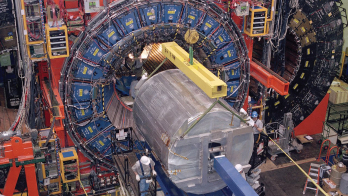By Eugenio Nappi and Vladimir Peskov
Wiley-VCH
Hardback: €139
Paperback: €124.99

For those who belong to the Paleozoic era of R&D on gas detectors, this book evokes nostalgic memories of the hours spent in dark laboratories chasing sparks under black cloths, chasing leaks with screaming “pistols”, taming coronas with red paint and yellow tape and, if you belonged to the crazy ones of Building 28 at CERN, sharing a glass of wine and the incredible maggoty Corsican cheese with Georges Charpak. Subtitle it “The sorcerer’s Apprentice”, and an innocent student might think they have entered the laboratory of Merlin: creating electrons from each fluttering photon, making magical mixtures of liquids, exotic vapours, funny thin films and all of the strange concoctions that inhabited the era of pioneering R&D and led step-by-step to today’s devices.
The historical memory behind this book recalls all sorts of gaseous detectors that have been dreamt up by visionary scientists over the past 50 years: drift chambers, the ambitious time-projection chamber, resistive plate chambers, ring-imaging Cherenkov counters, parallel-plate avalanche counters, gas electron multipliers, Micromegas, exotic micro-pattern gaseous detectors (MPGDs) and more. All are included, both the ones that behaved and the ones that did not pay off – providing no excuse for anyone to re-make mistakes after reading the book. All of the basic processes that populate gas counters are reviewed and their functioning and limitations are explained in a simple and concise manner offering, to the attentive reader, key secrets and the solutions to obviate hidden traps. From the basic ionization processes to the trickiness of the streamer and breakdown mechanism, from the detection of a single photon to the problems of high rates – only lengthy, hands-on experience supported by a profound understanding of the physics of the detection processes could bring together the material that this book covers. Furthermore, it includes many notable explanations that are crystal clear yet also suitable for the theoretical part of a high-profile educational course.
Coming to more recent times, the use of microelectronics techniques in the manufacturing process of gas counters has paved the road to the new era of MPGDs. The authors follow this route, the detector designs and the most promising future directions and applications, critically but with great expectation, leaving the reader confident of many developments to come.
Each of us will find in this book some corner of our own memory, the significance of our own gaseous detector in recent and current experiments, together with a touch of the new in exploring the many possible applications of gas counters in medicine, biology or homeland security and – when closing the book – the compelling need to stay in the lab. Chapeau!








